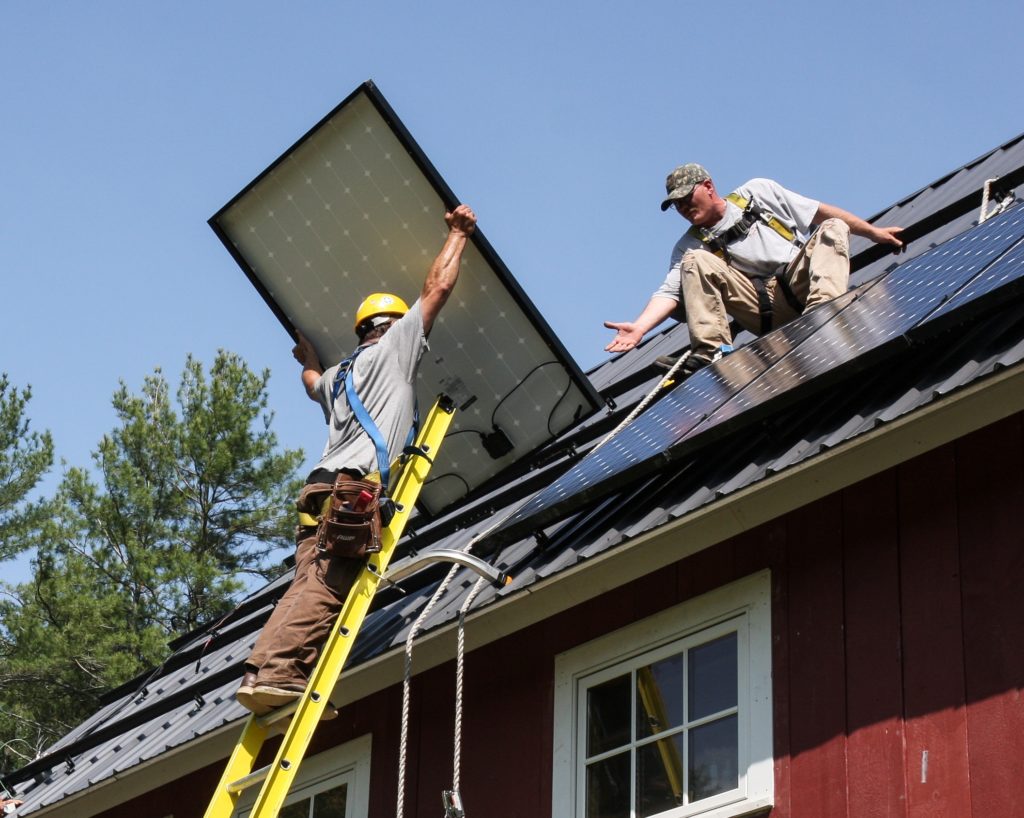Vermont’s Global Warming Solutions Act, passed in September, 2020, effectively requires that Vermont hit its climate pollution reduction targets. To do so, it established the Vermont Climate Council, which will work to create comprehensive and equitable solutions to both reduce our carbon footprint and ensure our communities are prepared for existing and potential consequences of climate change.
The Climate Council consists of 23 members representing a diverse array of backgrounds, from low income and climate advocates to a dairy farmer and a utilities representative.
The Council members are as follows (taken from the Climate Council website):
Cabinet Members:
- Susanne Young, Chair, Agency of Administration, Secretary
- Julie Moore, Agency of Natural Resources, Secretary
- Anson Tebbetts, Agency of Agriculture Food and Markets, Secretary
- Lindsay Kurrle, Agency of Commerce and Community Development, Secretary
- Sean Brown, Agency of Human Services, Commissioner of Department of Children for Families, designee
- Joe Flynn, Agency of Transportation, Secretary
- Erica Bornemann, Department of Public Safety, Director of Vermont Emergency Management, designee
- June Tierney, Department of Public Service, Commissioner
Members Appointed by the Senate Committee on Committees
- Abbie Corse, The Corse Farm Dairy, member to represent the farm and forest sector
- Chad Farrell, Founder and Chief Executive Officer of Encore Renewable Energy, member to represent the clean energy sector
- Jared Duval, Executive Director or Energy Action Network, member to represent energy and data analysis
- Kelly Klein, Founder and CEO of Groennfell Meadery and Havoc Mead, member to represent the small business community
- Lauren Oates, The Nature Conservancy, member to represent the resilience and disaster response
- Sophia Clark, Hyde Park, youth member
- Sue Minter, Executive Director of Capstone Community Action, member to represent the Vermont Community Action Partnership
Members Appointed by the House of Representatives
- Adam Knudsen, Dynapower, member to represent Vermont manufacturers
- Catherine Dimitruk, Northwest Regional Planning Commission, member to represent rural communities
- Chris Campany, Windham Regional Commission, member to represent the municipal governments
- Johanna Miller, Vermont Natural Resources Council, member to represent a statewide environmental organization
- Dr. Lesley-Ann Dupigny-Giroux, Vermont State Climatologist, UVM Professor of Climate and Climate Change, member with expertise in climate change science
- Liz Miller, Green Mountain Power, member to represent distribution utilities
- Richard Cowart, Regulatory Assistance Project, member with expertise and professional experience in the design and implementation of programs to reduce greenhouse gas emissions
- Vacant, member to represent the fuel sector
You can find more extensive biographies of each member here.
Over the course of 2021, this Council will meet regularly to discuss the ways in which Vermont can reduce our climate pollution in order to hit the targets set out by the Paris Climate Accords, and the other, longer term climate targets Vermont has committed to.
They will also be finding ways to build the resilience of Vermont’s communities to the effects of the climate crisis, which are already being felt around the state. Increased flooding, unpredictable weather patterns, public health threats, and more intense storms are all things that we need to be prepared for – and there must be an organized response at the state level. This will look like building modern infrastructure, fortifying local electrical systems, and implementing town annual assessments to ensure our communities can bounce back quickly should we see another Tropical Storm Irene, or worse.
The Council will also be creating subcommittees in early 2021 to deepen their work on major subjects. The subcommittees will be comprised of both Council members and non-Council members, and will consist of the following:
- Rural Resilience and Adaptation Subcommittee
- “…shall focus on the pressures that climate change adaptation will impose on rural transportation, electricity, housing, emergency services, and communications infrastructure, and the difficulty of rural communities in meeting the needs of its citizens.” (Solutions Act, pg. 9)
- Cross-Sector Mitigation Subcommittee
- “…shall focus on identifying the most scientifically and technologically feasible strategies and programs that will result in the largest possible greenhouse gas emissions reductions in the most cost-effective manner.” (Solutions Act, pg. 11)
- Just Transitions Subcommittee
- “…shall ensure that strategies consider the disproportionate impact of climate change on rural, low income, and marginalized communities and that programs and incentives for building resilience are designed to be accessible to all Vermonters and do not unfairly burden any groups, communities, geographic locations, or economic sectors.” (Solutions Act, pg. 11)
- Agriculture and Ecosystems Subcommittee
- “…shall focus on the role Vermont’s natural and working lands play in carbon sequestration and storage, climate adaptation, and ecosystem and community resilience.” (Solutions Act, pg. 11)
The document the Climate Council will produce and publish in December of next year is meant to include a comprehensive list of recommendations for meeting our climate goals while advancing equity and community resilience. From there, the Agency of Natural Resources will act on the recommendations they can using their current authority. Others will have to go to the legislature for action.
Throughout the year, we will be asking our members to weigh in during public comment periods. The more public engagement and transparency this Council has, the better.
The third meeting of the Climate Council will be held Monday, January 4th at 8am, and is open to the public – you can find the link to join here.
Find below the full text of the Global Warming Solutions Act, as enacted:

